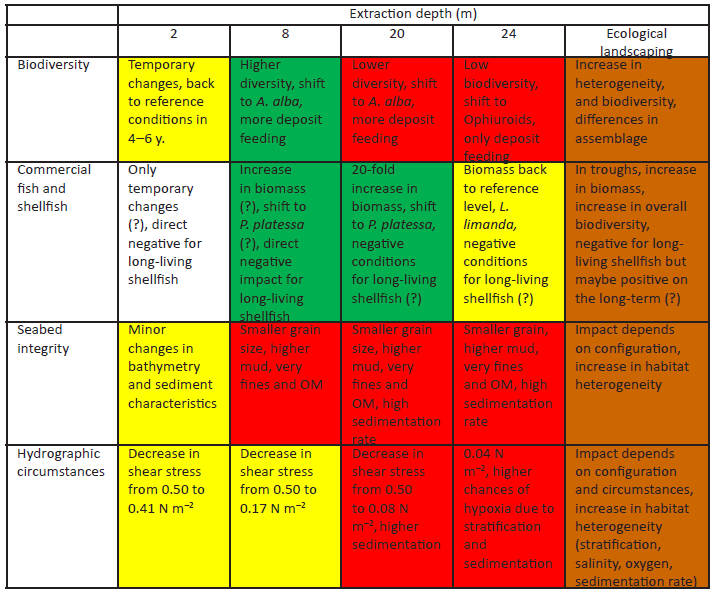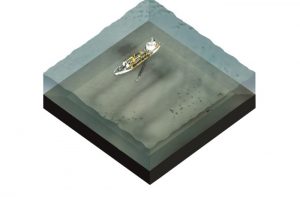Determine a basic design for a landscaped ecological mining pit
The results presented in a report (Tonnon, 2013) and study (De Jong et al. 2015b) support the hypothesis that ecosystem-based landscaping increases biodiversity in the sand extraction site. Moreover, based on the bed shear stress, a distinction could be made between two clusters (the Albra alba assemblage and the Echinoidea spp. – phoronidea assamblage). The Albra assemblage was roughly found in areas having a bed shear stress smaller than 0.4 N m-2 and the Echinoidea spp. – phoronidea assemblage was roughly found at bed shear stresses larger than 0.4 N m-2.
Ecological data and bed shear stress values were transformed into ecosystem-based design rules for the Dutch Continental Shelf. At higher flow velocities and larger water depths, larger extraction depths can be applied to achieve desired tide-averaged bed shear stresses for related ecological effects (De Jong et al., 2016). The Ecosystem Based Design (EBD) rules can be used in the early-design phases of future sand extraction sites to simultaneously maximise sand yields and decrease the surface area of direct impact. The EBD rules and ecological landscaping can also help in implementing the European Union’s Marine Strategy Framework Directive (MSFD) guidelines and moving to or maintaining Good Environmental Status (GES).
The ecological effects of the different extraction depths and ecological landscaping in view of the criteria of the MSFD descriptors for the Dutch coastal area with 20 m pre-extraction water depth and a flow velocity of 0.65 m s-1. Green: positive effects, yellow: minor effects, red: negative aspects and brown intermediate effects (positive and negative)

More detailed information of the EBD-rules can be found in Ecosystem-Based Design Rules for Sand Extraction Sites

